Leora J. Goodin
I'm a blogger dedicated to sharing insights on lifestyle and wellness. Through personal stories and practical tips, I aim to inspire and empower my readers to lead healthier, more fulfilling lives.
Black Friday and Cyber Monday 2023 Deals for Motion Designers, grab it now!
Students and teachers save a massive 71% on Creative Cloud All Apps

Kickstart your candle-making journey with our easy step-by-step guide on scenting candles; discover the secrets to captivating aromas. Read more to master the art.
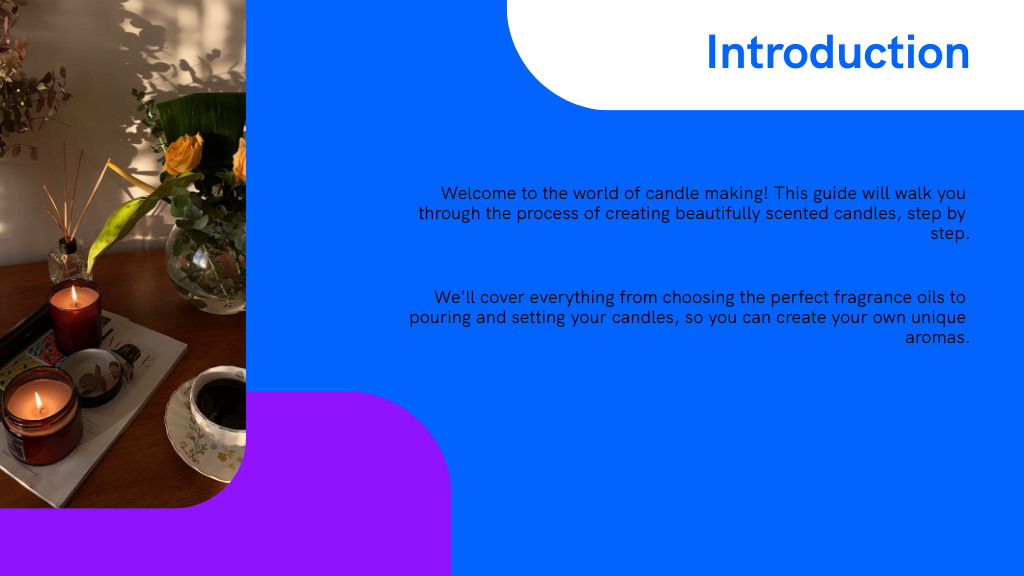
To scent your candles, start by choosing high-quality fragrance oils designed for candle making and determining the fragrance load, typically 6-10% of your wax's weight. Melt the wax using a double boiler, and when it reaches about 185°F, stir in the fragrance oil for two full minutes to guarantee an even scent distribution. Pour the wax into preheated containers and let them cure for 48 hours. Lighting them fills your space with the perfect aroma, and exploring different fragrances brings endless possibilities.
Choosing the right fragrance oils is crucial to crafting a candle that truly captures your desired ambiance. When you're diving into perfume candle making, the scent is your main attraction.
Here's how to scent candles effectively: Start by selecting high-quality fragrance oils that evoke the mood you're aiming for—whether it's calming lavender or invigorating citrus. Always opt for oils designed specifically for candle making, as they're formulated to blend well with wax and emit a consistent fragrance.
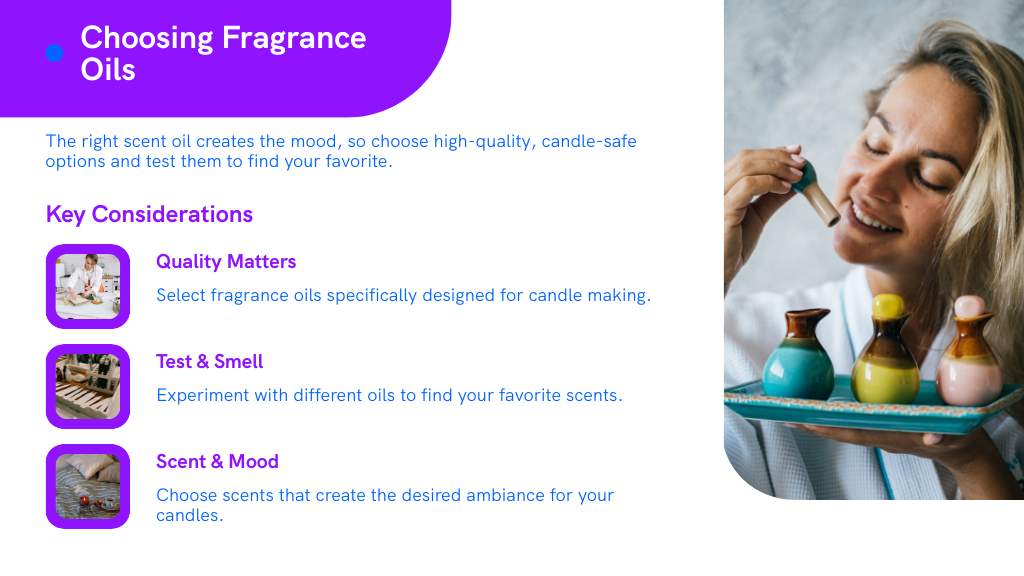
You'll want to test different oils to see how they perform as they burn. This step guarantees that the aroma is pleasing from the first light to when the candle goes out.
Understanding fragrance load is essential for crafting the perfect candle. You'll need to know how to calculate the ideal percentage that balances scent strength without compromising the candle's performance. This balance affects how your candle burns and how the aroma is released.
When making scented candles, it's crucial to grasp the concept of fragrance load, which refers to the percentage of fragrance oil that's safely mixed into the wax without compromising the burning properties.
This ratio is pivotal because it affects both the scent strength and the candle's performance. Too little fragrance oil and your candle won't emit enough scent; too much, and you might encounter issues like poor burning or even safety hazards.
The fragrance load is basically your blueprint for balancing aroma intensity and candle functionality. Understanding this will help you create candles that not only smell wonderful but also burn correctly and safely. It's all about finding that sweet spot in your candle-making process.
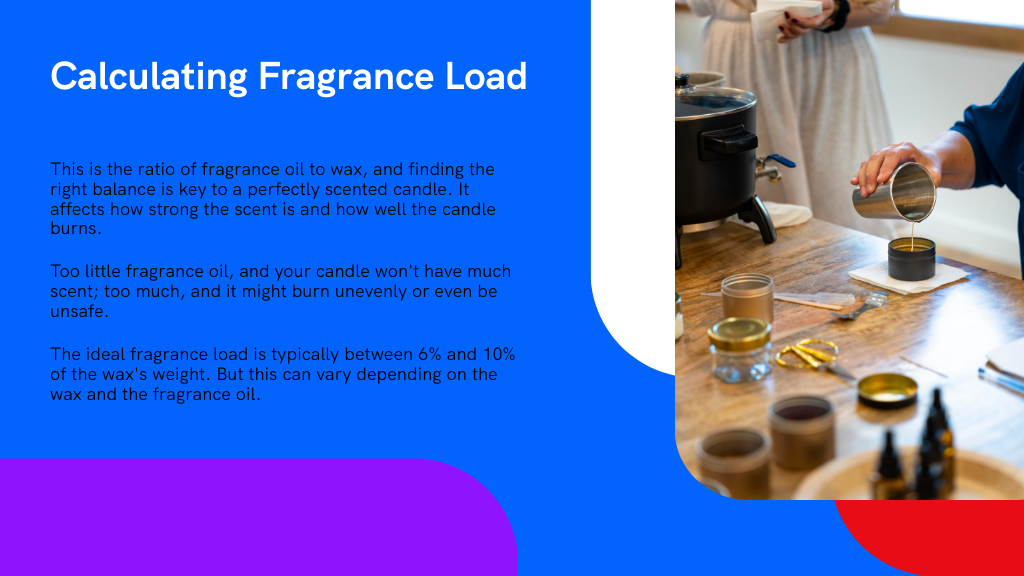
Now that you're familiar with the importance of fragrance load, let's figure out how to calculate the ideal percentage for your candles. The fragrance load is fundamentally the ratio of fragrance oil to wax, and finding the right balance is key to a perfect scented candle.
Here's how you can nail it:
As you master the art of calculating fragrance load, you'll notice its significant impact on candle performance. If you've got too much fragrance, it can cause the candle to smoke or burn unevenly. On the flip side, too little means the scent might be too weak when the candle is lit.
The right percentage guarantees a smooth burn and a delightful aroma release. Typically, a fragrance load of 6-10% is ideal, but this varies based on the type of wax and the specific fragrance oil's potency.
You'll need to experiment a bit to find the sweet spot. Remember, the goal is a well-performing candle that fills the room with just the right amount of fragrance.
Before you begin crafting your scented candles, it's important to gather the right supplies. You'll need a few key items to guarantee your project turns out just as you've envisioned.
Here's a quick list of essentials:
Having these supplies on hand will make the process smoother and more enjoyable. Now, you're ready to move on to preparing your candle wax!
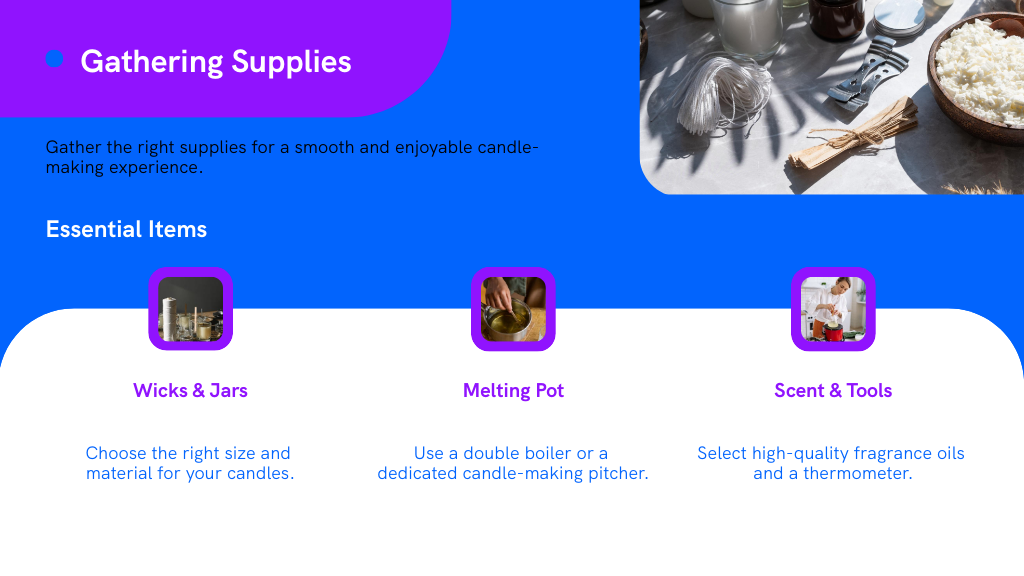
Once you've assembled your candle-making supplies, it's time to prepare the wax, the foundation of your scented candle. First, you'll need to decide how much wax is necessary for your project. Typically, you'll measure the wax by weight, ensuring accuracy for the melt. Use a kitchen scale if you have one.
Determine your project's wax needs by weighing it accurately, ideally with a kitchen scale.
Next, cut or break your wax into smaller pieces or flakes. This helps it melt evenly and quickly, reducing the chance of burning. Place the wax in a clean, dry heat-resistant container—a double boiler works best for this purpose.
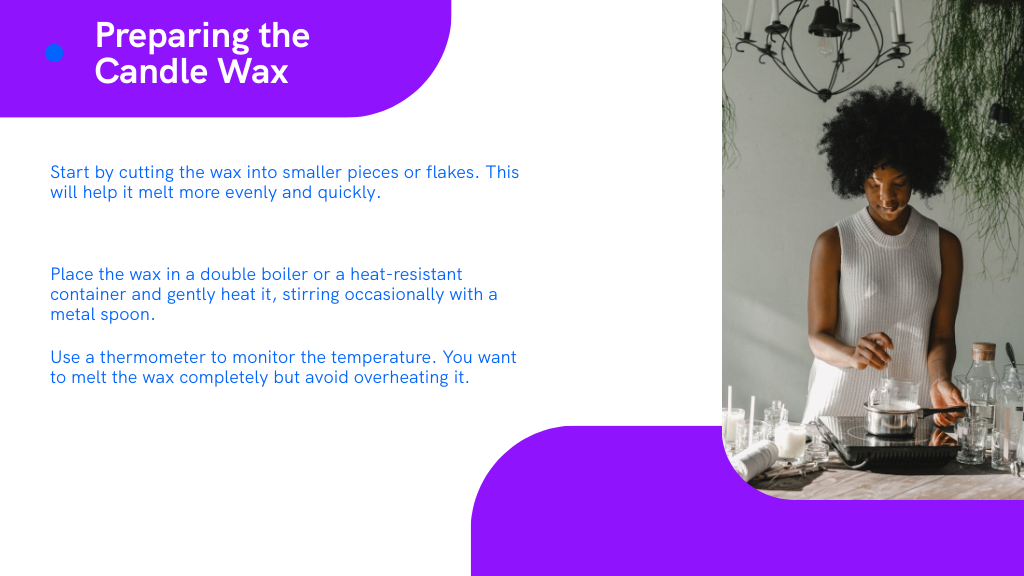
Gently heat the wax, stirring occasionally with a metal spoon. Keep an eye on the temperature using a thermometer; you'll want to maintain it just until the wax melts completely. Avoid overheating, as this can affect the wax's quality.
When your wax has completely melted, it's time to add the fragrance oil. This step is essential for achieving the desired scent intensity in your candles. Here's how to do it right:
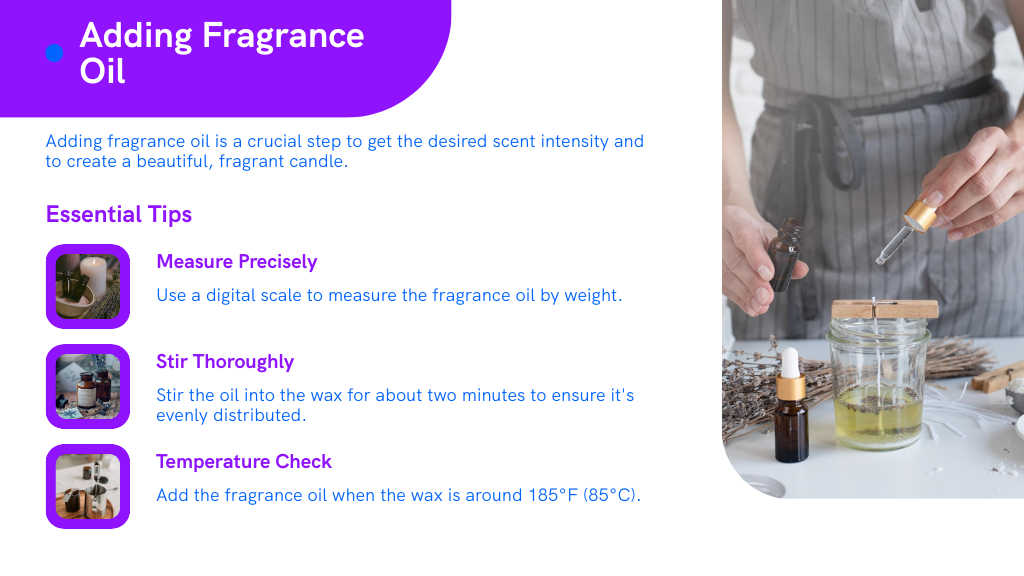
Now, you're set for a beautifully scented candle!
After adding the fragrance oil and letting the wax cool slightly, it's crucial to test the scent throw to guarantee your candle emits the aroma effectively.
To do this, you'll need a small test candle. Pour a bit of your scented wax into a votive or container. Let it set until solid, then light the wick and let it burn for a few hours. This small-scale test helps you understand how the candle will perform in a normal setting.
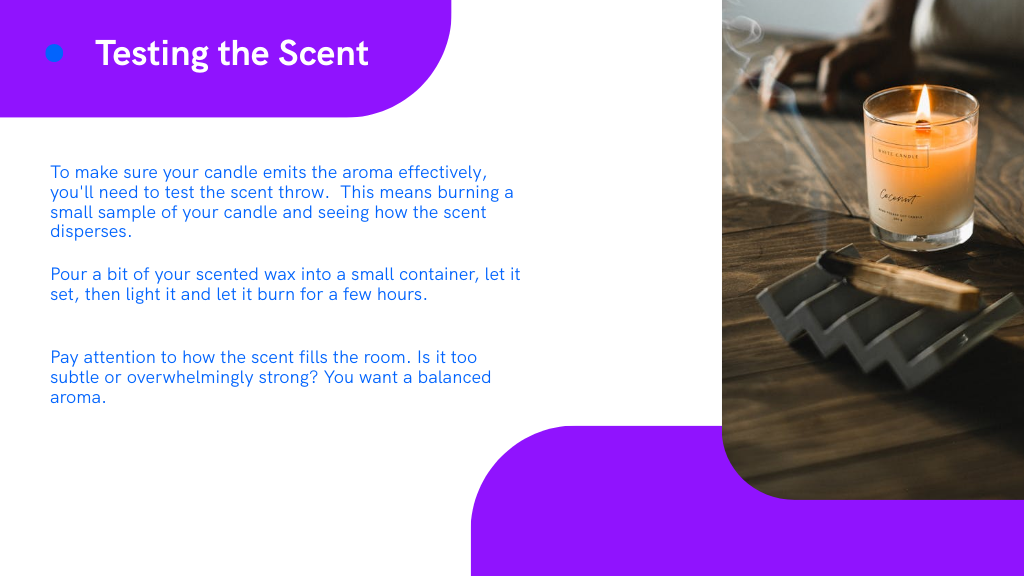
Pay attention to how the scent disperses. Is it too subtle or overwhelmingly strong? You're aiming for a balanced aroma that fills the room without overpowering it. Adjust the amount of fragrance oil accordingly if the scent throw isn't ideal.
As you prepare to pour your wax into the mold or container, make sure the temperature is just right—not too hot, as this could affect the setting process and the final appearance of your candle. Gently pour the wax to avoid air bubbles, which can mar the surface and clarity.
To guarantee a perfect candle:
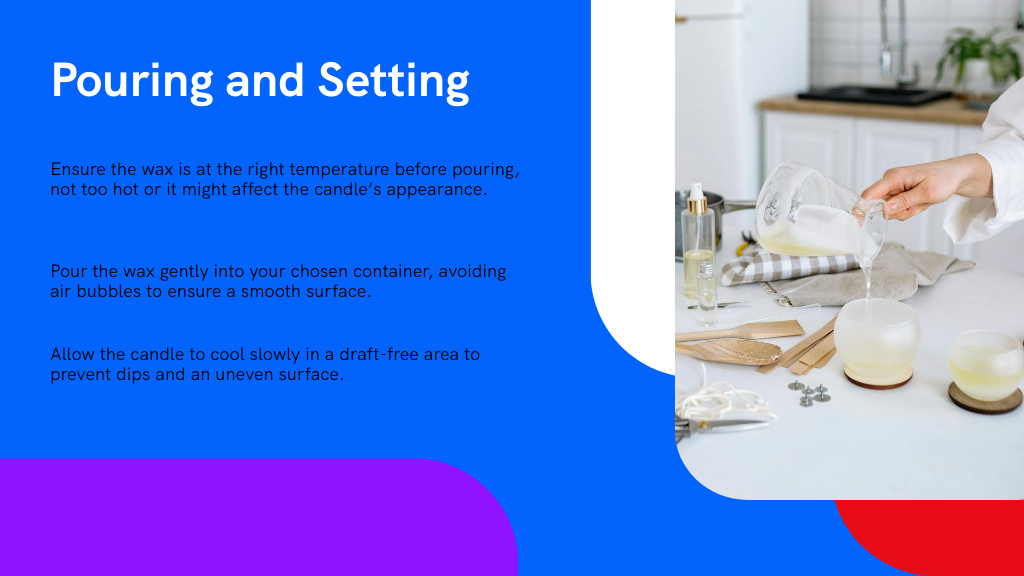
These steps will help create a beautifully set, fragrant candle.
To guarantee your scented candles burn evenly and safely, it's essential you trim the wick to about 1/4 inch before each use. This prevents soot buildup and guarantees a cleaner burn.
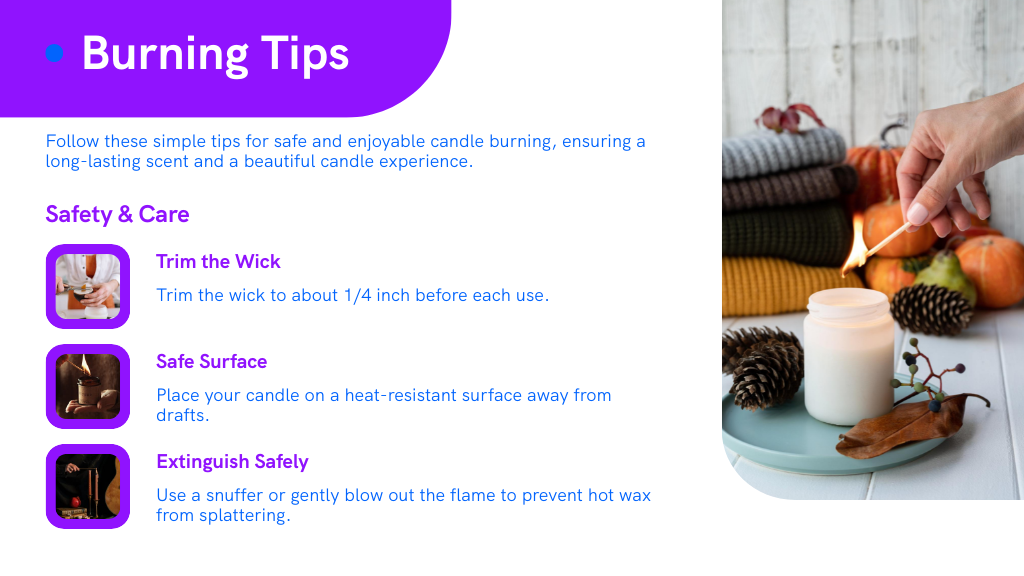
Always place your candle on a heat-resistant surface away from drafts, curtains, pets, and children. When lighting it, let it burn long enough for the top layer of wax to fully melt; this avoids tunneling and maximizes scent distribution.
Don't burn your candle for more than four hours at a time to preserve its longevity. Finally, when it's time to extinguish the flame, use a snuffer or gently blow it out to prevent hot wax from splattering and to keep the scent intact.
As you commence your candle-making journey, think of yourself as an alchemist, blending mystical oils into wax, much like weaving dreams into reality. Your creation—more than just a candle—symbolizes your power to transform the mundane into the magical. Each flicker of its flame dances with your spirit, casting light on shadowed corners, spreading warmth and whisperings of your crafted essence. Burn it wisely, letting its scent narrate your home's untold stories, one serene breath at a time.

Your email address will not be published. Required fields are marked *